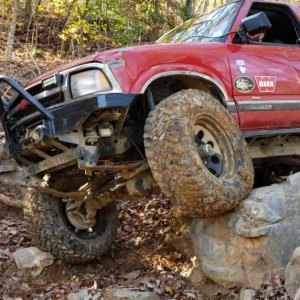japerry
Well-Known Member
Okay. now before I say anything. I'm just waiting for those who'll post...
:corn: :corn: :corn:
and
:eeek: :eeek: :eeek:
and
:looser: :looser: :looser:
I know what your opinions are, and I believe you're wrong. I'll be happy to eat crow when my IP/Injectors/etc go out. With that out of the way. Time to do some explaining.
Background
I've been running a 1983 Mercedes 300SD for 2 1/2 years on 100% WVO. I purchased the kit from Kent Bergsma at mercedessource up in Bellingham. He has a good grip of what is good and not good for mercedes engines, so I trusted him when he said that 'if done properly, wvo shouldn't do anything bad to a mercedes engine'. That said, I have 40,000 miles on WVO, and besides other engine problems (the car wasn't in great shape when I bought it), its been running great. If you look at the average price of fuel over 2.5 years, its about $3.50. It gets about 20mpg. I spent $1100 on the Mercedes kit. I've saved $6100.
In 2006 I purchased a Jeep CRD with the plan to convert it to veggie oil. Suffice it to say, these vehicles barely ran with Diesel in them, much less converted. In June I dumped this vehicle and bought a duramax.
Why Duramax?

Many swear by Cummins as the engine of choice for WVO. I'll be honest, I'm not a dodge guy. Grew up with GM, swear by GM. That said, I gotta have some science behind me. Many people talk about the '02-'04 Dmax's and WVO/engine problems. They are right. These engines Suck. The LB7 and early LLYs are trash, and I would never run one. They have injector problems regardless of fuel.
However, the late model LLY, or even better, LBZ engines are awesome. The LBZ engine has a much improved injector system, and gets rid of the FICM. The other nice thing about this engine is the ability to tune it perfectly. With all the sensors around it, you can pretty much tune it to run WVO in a safe matter. No more guessing. Add a VOcontroller on the fuel side, and you have pre-timed switchovers, automatic diesel purging, etc.
Many have ringed sounds of success with later model dmaxs. That said, at $3500 for injector replacement, I can afford to replace my injectors every 3 years on the dmax and STILL come out on top.
The conversion
First, start with some diagrams. I whipped these up in Omnigraffle.
Fuel Diagram:


The Parts
Most parts were purchased from Plant Drive. They sell a duramax kit. But be warned, these kits are not nearly the quality of something from Mercedessource. THe instructions are rough, have no pictures, nor diagrams. You receive 10 different boxes, all drop shipped at different times, and you're on the hook for your own hoses, hose clamps, etc.

Basically, whatever you paid for the kit, add another $500 in extra parts. This is why for mercedes conversions, I'd highly suggest mercedessource.com -- you get EVERYTHING in the kit, down to a roll of dottie tape to wrap your coolant lines.
When the conversion is finished, I'll make a line item checklist. The cost will come to about $4000. Considerably more than the mercedes. But I plan on having this truck a LONG time. Think about it, a trip to Moab and back could save ~$500.
Relocation
Today, we took a look at where things would go. Because the vormax is so huge, it really only fit in the bed of the truck.


We needed more space in the engine compartment, so I decided to move the Aux battery to the bed of the truck. That opened up a 7"x11" working space. More than enough for the valves and hotplate.

Started plumbing in the filters. The inner lip of the bed works really well to bolt things to. Made a few brackets to help keep things stable:


Look further below for the rest of the story....
:corn: :corn: :corn:
and
:eeek: :eeek: :eeek:
and
:looser: :looser: :looser:
I know what your opinions are, and I believe you're wrong. I'll be happy to eat crow when my IP/Injectors/etc go out. With that out of the way. Time to do some explaining.
Background
I've been running a 1983 Mercedes 300SD for 2 1/2 years on 100% WVO. I purchased the kit from Kent Bergsma at mercedessource up in Bellingham. He has a good grip of what is good and not good for mercedes engines, so I trusted him when he said that 'if done properly, wvo shouldn't do anything bad to a mercedes engine'. That said, I have 40,000 miles on WVO, and besides other engine problems (the car wasn't in great shape when I bought it), its been running great. If you look at the average price of fuel over 2.5 years, its about $3.50. It gets about 20mpg. I spent $1100 on the Mercedes kit. I've saved $6100.
In 2006 I purchased a Jeep CRD with the plan to convert it to veggie oil. Suffice it to say, these vehicles barely ran with Diesel in them, much less converted. In June I dumped this vehicle and bought a duramax.
Why Duramax?

Many swear by Cummins as the engine of choice for WVO. I'll be honest, I'm not a dodge guy. Grew up with GM, swear by GM. That said, I gotta have some science behind me. Many people talk about the '02-'04 Dmax's and WVO/engine problems. They are right. These engines Suck. The LB7 and early LLYs are trash, and I would never run one. They have injector problems regardless of fuel.
However, the late model LLY, or even better, LBZ engines are awesome. The LBZ engine has a much improved injector system, and gets rid of the FICM. The other nice thing about this engine is the ability to tune it perfectly. With all the sensors around it, you can pretty much tune it to run WVO in a safe matter. No more guessing. Add a VOcontroller on the fuel side, and you have pre-timed switchovers, automatic diesel purging, etc.
Many have ringed sounds of success with later model dmaxs. That said, at $3500 for injector replacement, I can afford to replace my injectors every 3 years on the dmax and STILL come out on top.
The conversion
First, start with some diagrams. I whipped these up in Omnigraffle.
Fuel Diagram:


The Parts
Most parts were purchased from Plant Drive. They sell a duramax kit. But be warned, these kits are not nearly the quality of something from Mercedessource. THe instructions are rough, have no pictures, nor diagrams. You receive 10 different boxes, all drop shipped at different times, and you're on the hook for your own hoses, hose clamps, etc.

Basically, whatever you paid for the kit, add another $500 in extra parts. This is why for mercedes conversions, I'd highly suggest mercedessource.com -- you get EVERYTHING in the kit, down to a roll of dottie tape to wrap your coolant lines.
When the conversion is finished, I'll make a line item checklist. The cost will come to about $4000. Considerably more than the mercedes. But I plan on having this truck a LONG time. Think about it, a trip to Moab and back could save ~$500.
Relocation
Today, we took a look at where things would go. Because the vormax is so huge, it really only fit in the bed of the truck.


We needed more space in the engine compartment, so I decided to move the Aux battery to the bed of the truck. That opened up a 7"x11" working space. More than enough for the valves and hotplate.

Started plumbing in the filters. The inner lip of the bed works really well to bolt things to. Made a few brackets to help keep things stable:


Look further below for the rest of the story....
Last edited:











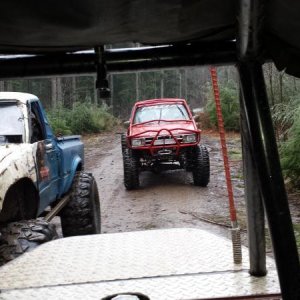
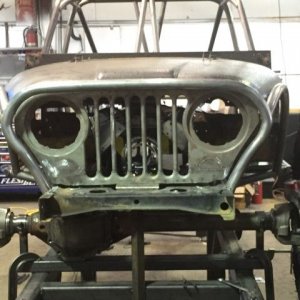

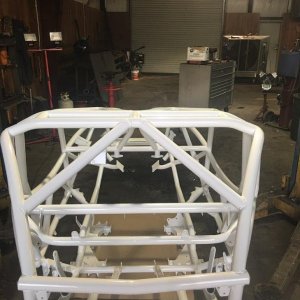
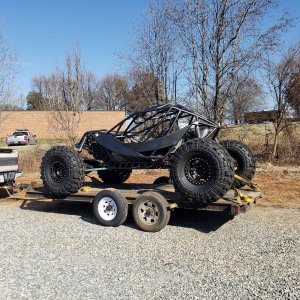

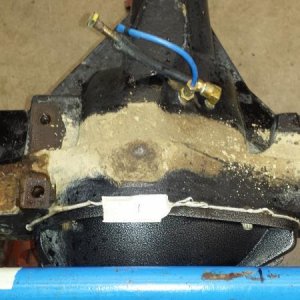
![IMG_0435[1].JPG](http://attachments.www.hardlinecrawlers.com/xfmg/thumbnail/5/5418-b1c01d6df97c959ebb63b3fbc42d2267.jpg?1625928540)
